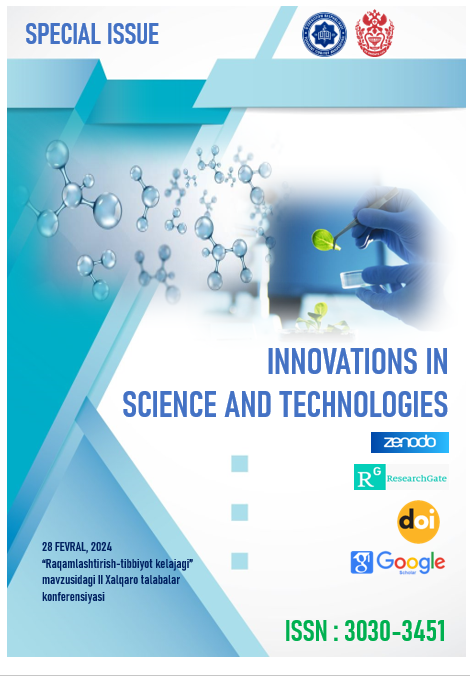DEVELOPMENT OF BIO-INSPIRED ROBOTS
Keywords:
Robotics, Biological System, Living organism, Healthcare, Human lifeAbstract
The development of bio-inspired robots is a captivating and rapidly advancing field within robotics and bioengineering. Researchers are increasingly turning to nature for inspiration in designing robots that mimic the structure, movement, and functionality of living organisms. By emulating biological systems, these robots aim to achieve enhanced efficiency, adaptability, and interaction capabilities. Bio-inspired robots are being developed to navigate complex terrains, perform delicate tasks, and even interact with living organisms, showing promise in applications ranging from healthcare to environmental monitoring. This abstract provides an overview of the current trends and advancements in the development of bio-inspired robots, highlighting their potential to revolutionize various industries and improve the quality of human life
Downloads
References
Autumn, K., Liang, Y. A., Hsieh, S. T., Zesch, W., Chan, W. P., Kenny, T. W., et al. (2000). Adhesive force of a single gecko foot-hair. Nature 405 (6787), 681–685. doi:10.1038/35015073
Blum, K. P., Versteeg, C., Sombeck, J., Chowdhury, R. H., and Miller, L. E. (2021). “Proprioception: A sense to facilitate action,” in Somatosensory feedback for neuroprosthetics (Amsterdam, Netherlands: Elsevier), 41–76
Ghez, C., Gordon, J., Ghilardi, M. F., Christakos, C. N., and Cooper, S. E. (1990). Roles of proprioceptive input in the programming of arm trajectories. Cold Spring Harb. Symp. Quant. Biol. 55, 837–847. doi:10.1101/sqb.1990.055.01.079
Gilpin, W., Prakash, V. N., and Prakash, M. (2017). Vortex arrays and ciliary tangles underlie the feeding-swimming trade-off in starfish larvae. Nat. Phys. 13 (4), 380–386. doi:10.1038/Nphys3981
Hanson, J. (1957). The structure of the smooth muscle fibres in the body wall of the Earth worm. J. Biophys. Biochem. Cytol. 3 (1), 111–122. doi:10.1083/jcb.3.1.111
Bellicoso, C. D., Bjelonic, M., Wellhausen, L., Holtmann, K., Günther, F., Tranzatto, M., et al. (2018). Advances in real-world applications for legged robots. J. Field Robotics 35, 1311–1326. doi:10.1002/rob.21839
Amelia, T. S. M., Khalik, W. M. A. W. M., Ong, M. C., Shao, Y. T., Pan, H. J., and Bhubalan, K. (2021). Marine microplastics as vectors of major ocean pollutants and its hazards to the marine ecosystem and humans. Prog. Earth Planet. Sci. 8, 12–26. doi:10.1186/s40645-020-00405-4
Aubin, C. A., Choudhury, S., Jerch, R., Archer, L. A., Pikul, J. H., and Shepherd, R. F. (2019). Electrolytic vascular systems for energy-dense robots. Nature 571, 51–57. doi:10.1038/s41586-019-1313-1201
Bicer, M., Phillips, A. T., Melis, A., McGregor, A. H., and Modenese, L. (2022). Generative deep learning applied to biomechanics: A new augmentation technique for motion capture datasets. J. Biomechanics 144, 111301. doi:10.1016/j.jbiomech.2022.111301
Blender, T., Buchner, T., Fernandez, B., Pichlmaier, B., and Schlegel, C. (2016). “Managing a mobile agricultural robot swarm for a seeding task,” in IECON 2016-42nd Annual Conference of the IEEE Industrial Electronics Society, Florence, Italy, 23-26 October 2016 (IEEE), 6879–6886.
doi:10.1109/IECON.2016.7793638
Downloads
Published
Issue
Section
License
License Terms of our Journal











